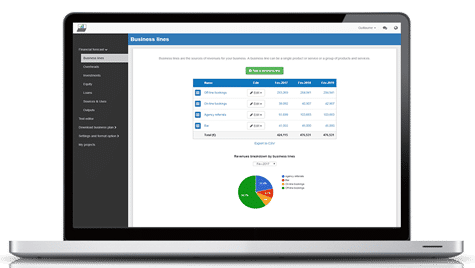How to create a financial forecast for a bubble tea shop?

Creating a financial forecast for your bubble tea shop, and ensuring it stays up to date, is the only way to maintain visibility on future cash flows.
This might sound complex, but with the right guidance and tools, creating an accurate financial forecast for your bubble tea shop is not that hard.
In this guide, we'll cover everything from the main goal of a financial projection, the data you need as input, to the tables that compose it, and the tools that can help you build a forecast efficiently.
Without further ado, let us begin!
Why create and maintain a financial forecast for a bubble tea shop?
The financial projections for your bubble tea shop act as a financial blueprint to guide its growth with confidence and ensure its long-term financial viability.
To create them, you will need to look at your business in detail - from sales to operating costs and investments - to assess how much profit it can generate in the years to come and what will be the associated cash flows.
During challenging market conditions, maintaining an up-to-date financial forecast enables early detection of potential financial shortfalls, allowing for timely adjustments or securing financing before facing a cash crisis.
Your bubble tea shop's financial forecast will also prove invaluable when seeking financing. Banks and investors will undoubtedly request a thorough examination of your financial figures, making precision and presentation essential.
Need a solid financial forecast?
The Business Plan Shop does the maths for you. Simply enter your revenues, costs and investments. Click save and our online tool builds a three-way forecast for you instantly.
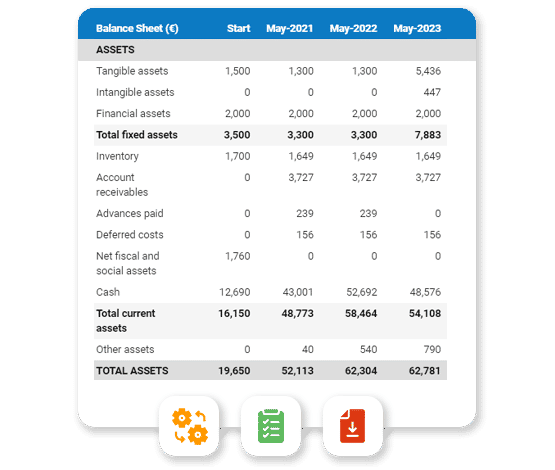
What information is used as input to build a bubble tea shop financial forecast?
A bubble tea shop's financial forecast is only as good as the inputs used to build it.
If you are creating (or updating) the forecast of an existing bubble tea shop, then you mostly need your accounting information, key historical operating non-financial data, and your team’s input on what to expect for the coming years.
If you are building financial projections for a bubble tea shop startup, you will need to have done your research and have a clear picture of your competitive environment and go-to-market strategy so that you can forecast sales accurately.
For a new venture, you will also need a precise list of the resources needed to keep the bubble tea shop running on a day-to-day basis and a list of the equipment and expenditures required to start the business (more on that later).
Let's now take a closer look at the elements that make up your bubble tea shop's financial forecast.
The sales forecast for a bubble tea shop
From experience, it is usually best to start creating your bubble tea shop financial forecast by your sales forecast.
To create an accurate sales forecast for your bubble tea shop, you will have to rely on the data collected in your market research, or if you're running an existing bubble tea shop, the historical data of the business, to estimate two key variables:
- The average price
- The number of monthly transactions
To get there, you will need to consider the following factors:
- Weather conditions: The weather can significantly impact the sales of your bubble tea shop. During hot summer months, you can expect an increase in sales as people seek refreshing drinks. In contrast, cold and rainy weather may lead to a decrease in sales.
- Seasonal trends: Your sales forecast should also consider seasonal trends. For example, during the holiday season, you may experience a boost in sales as people are more likely to indulge in treats and gifts for loved ones.
- Competitors: The presence of competitors in your area can affect your average price and number of monthly transactions. If there are many other bubble tea shops nearby, you may need to adjust your prices to remain competitive or come up with unique offerings to attract customers.
- Tourism: If your bubble tea shop is located in a tourist destination, you can expect an increase in sales during peak tourist seasons. This could result in higher average prices as tourists are willing to spend more on experiences.
- Availability of ingredients: The availability of ingredients can impact your business's average price and number of monthly transactions. If certain ingredients used in bubble tea become scarce, you may need to adjust your prices or limit certain menu items, which can affect your sales.
Once you have an idea of what your future sales will look like, it will be time to work on your overhead budget. Let’s see what this entails.
Need inspiration for your business plan?
The Business Plan Shop has dozens of business plan templates that you can use to get a clear idea of what a complete business plan looks like.
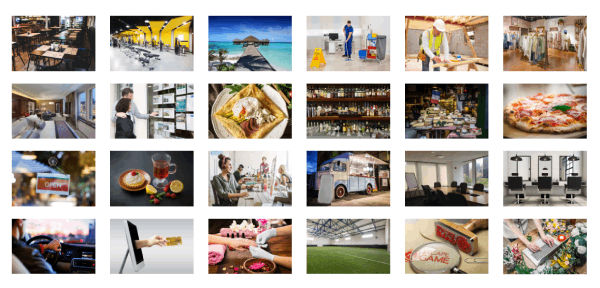
The operating expenses for a bubble tea shop
Once you know what level of sales you can expect, you can start budgeting the expenses required to operate your bubble tea shop on a daily basis.
Expenses normally vary based on how much revenue you anticipate (which is why, from experience, it is always better to start your forecast with the topline projection), and where your business is based.
Operating expenses for a bubble tea shop will include some of the following items:
- Your staff costs, including wages, benefits, and training expenses, are a significant operating expense for your bubble tea shop.
- You will also need to budget for accountancy fees to ensure accurate financial records and tax compliance.
- Insurance costs, such as liability insurance and property insurance, are important to protect your business and its assets.
- Software licenses for point-of-sale systems, inventory management, and accounting software are essential expenses for running your bubble tea shop.
- Banking fees, such as transaction fees and merchant account fees, will be incurred for processing customer payments.
- Rent or lease payments for your shop space are another significant operating expense to consider.
- Utility bills, including electricity, water, and gas, are necessary for keeping your shop running and serving customers.
- Inventory costs, including ingredients and supplies for making your bubble tea and other menu items, are ongoing expenses for your shop.
- Marketing and advertising expenses, such as social media ads and flyers, can help attract new customers and keep existing ones coming back.
- Packaging and labeling costs for your bubble tea cups, straws, and other materials should also be factored into your operating expenses.
- Cleaning and maintenance expenses, such as hiring a cleaning service or purchasing cleaning supplies, are necessary to keep your shop clean and sanitary.
- Training and development costs for yourself and your staff, such as attending workshops or conferences, can help improve the quality of your bubble tea and customer service.
- License and permit fees for operating a food and beverage business should also be included in your operating expenses.
- Credit card processing fees for accepting payments from customers using credit or debit cards are another expense to consider.
- Finally, don't forget about miscellaneous expenses, such as office supplies, repairs, and equipment maintenance, that may arise while running your bubble tea shop.
This list will need to be tailored to the specificities of your bubble tea shop, but should offer a good starting point for your budget.
What investments are needed to start or grow a bubble tea shop?
Your bubble tea shop financial forecast will also need to include the capital expenditures (aka investments in plain English) and initial working capital items required for the creation or development of your business.
For a bubble tea shop, these could include:
- Bubble Tea Machines: These machines are essential for making bubble tea and can be quite expensive. You will need to invest in a commercial-grade bubble tea machine that can handle a high volume of orders and produce a consistent product.
- Refrigeration Equipment: Bubble tea ingredients, such as tapioca pearls and milk, need to be stored at specific temperatures to maintain freshness. Therefore, you will need to invest in commercial refrigeration equipment, such as a fridge and freezer, to store your ingredients.
- Furniture and Fixtures: Your bubble tea shop will need to be equipped with comfortable seating, tables, countertops, and shelving for storage. These items are crucial for creating a welcoming and functional space for your customers.
- Point of Sale (POS) System: A POS system is essential for any business, including a bubble tea shop. This system will allow you to track sales, manage inventory, and process transactions efficiently. You will need to invest in a reliable and user-friendly POS system for your shop.
- Packaging and Serving Supplies: To serve bubble tea, you will need to invest in cups, lids, straws, and other packaging materials. These items may seem small, but they can add up in cost, especially if you plan on offering different sizes and variations of bubble tea.
Again, this list will need to be adjusted according to the size and ambitions of your bubble tea shop.
Need a convincing business plan?
The Business Plan Shop makes it easy to create a financial forecast to assess the potential profitability of your projects, and write a business plan that’ll wow investors.
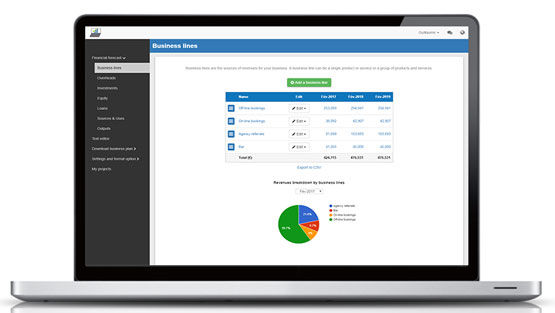
The financing plan of your bubble tea shop
The next step in the creation of your financial forecast for your bubble tea shop is to think about how you might finance your business.
You will have to assess how much capital will come from shareholders (equity) and how much can be secured through banks.
Bank loans will have to be modelled so that you can separate the interest expenses from the repayments of principal, and include all this data in your forecast.
Issuing share capital and obtaining a bank loan are two of the most common ways that entrepreneurs finance their businesses.
What tables compose the financial plan for a bubble tea shop?
Now let's have a look at the main output tables of your bubble tea shop's financial forecast.
The projected profit & loss statement
The projected profit & loss shows how profitable your bubble tea shop is likely to be in the years to come.

For your bubble tea shop to be financially viable, your projected P&L should ideally show:
- Sales growing above inflation (the higher the better)
- Profit margins which are stable or expanding (the higher the better)
- A net profit at the end of each financial year (the higher the better)
This is for established bubble tea shops, there is some leniency for startups which will have numbers that will look a bit different than existing businesses.
The projected balance sheet
Your bubble tea shop's projected balance sheet provides a snapshot of your business’s financial position at year-end.
It is composed of three types of elements: assets, liabilities and equity:
- Assets: represent what the business possesses including cash, equipment, and accounts receivable (money owed by clients).
- Liabilities: represent funds advanced to the business by lenders and other creditors. They include accounts payable (money owed to suppliers), taxes payable and loans from banks and financial institutions.
- Equity: is the combination of what has been invested by the business owners and the cumulative profits and losses generated by the business to date (which are called retained earnings). Equity is a proxy for the value of the owner's stake in the business.

The projected cash flow statement
A projected cash flow statement for a bubble tea shop is used to show how much cash the business is generating or consuming.
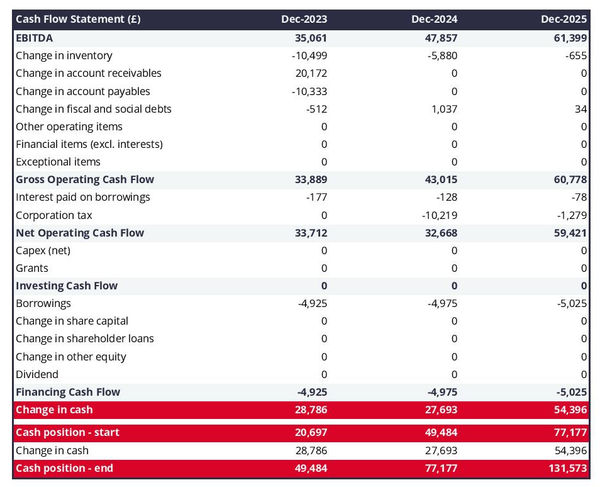
The cash flow forecast is usually organised by nature to show three key metrics:
- The operating cash flow: do the core business activities generate or consume cash?
- The investing cash flow: how much is the business investing in long-term assets (this is usually compared to the level of fixed assets on the balance sheet to assess whether the business is regularly maintaining and renewing its equipment)?
- The financing cash flow: is the business raising new financing or repaying financiers (debt repayment, dividends)?
Cash is king and keeping an eye on future cash flows is imperative for running a successful business. Therefore, you should pay close attention to your bubble tea shop's cash flow forecast.
If you are trying to secure financing, note that it is customary to provide both yearly and monthly cash flow forecasts in a financial plan - so that the reader can analyze seasonal variation and ensure the bubble tea shop is appropriately capitalised.
Need a solid financial forecast?
The Business Plan Shop does the maths for you. Simply enter your revenues, costs and investments. Click save and our online tool builds a three-way forecast for you instantly.

Which tool should you use to create your bubble tea shop's financial projections?
Building a bubble tea shop financial forecast is not difficult provided that you use the right tool for the job. Let’s see what options are available below.
Using online financial forecasting software to build your bubble tea shop's projections
The modern and easiest way is to use an online financial forecasting tool such as the one we offer at The Business Plan Shop.
There are several advantages to using specialised software:
- You can easily create your financial forecast by letting the software take care of the financial calculations for you without errors
- You have access to complete financial forecast templates
- You get a complete financial forecast ready to be sent to your bank or investors
- You can easily track your actual financial performance against your financial forecast, and recalibrate your forecast as the year goes by
- You can create scenarios to stress test your forecast's main assumptions
- You can easily update your forecast as time goes by to maintain visibility on future cash flows
- You have a friendly support team on standby to assist you when you are stuck
- It’s cost-efficient and much cheaper than using an accountant or consultant (see below)
If you are interested in this type of solution, you can try our projection software for free by signing up here.
Calling in a financial consultant or chartered accountant
Enlisting the help of a consultant or accountant is also a good way to obtain a professional bubble tea shop financial forecast.
The downside of this solution is its cost. From experience, obtaining a simple financial forecast over three years (including a balance sheet, income statement, and cash flow statement) is likely to cost a minimum of £700 or $1,000.
The indicative cost above, is for a small business, and a forecast is done as a one-shot exercise. Using a consultant or accountant to track your actuals vs. forecast and to keep your financial projections up to date on a monthly or quarterly basis will cost a lot more.
If you opt for this solution, make sure your accountant has in-depth knowledge of your industry, so that they may challenge your figures and offer insights (as opposed to just taking your assumptions at face value to create the forecast).
Why not use a spreadsheet such as Excel or Google Sheets to build your bubble tea shop's financial forecast?
You and your financial partners need numbers you can trust. Unless you have studied finance or accounting, creating a trustworthy and error-free bubble tea shop financial forecast on a spreadsheet is likely to prove challenging.
Financial modelling is very technical by nature and requires a solid grasp of accounting principles to be done without errors. This means that using spreadsheet software like Excel or Google Sheets to create accurate financial forecasts is out of reach for most business owners.
Creating forecasts in Excel is also inefficient nowadays:
- Software has advanced to the point where forecasting can be done much faster and more accurately than manually on a spreadsheet.
- With artificial intelligence, the software is capable of detecting mistakes and helping decision-making.
Spreadsheets are versatile tools but they are not tailor-made for reporting. Importing your bubble tea shop's accounting data in Excel to track actual vs. forecast is incredibly manual and tedious (and so is keeping forecasts up to date). It is much faster to use dedicated financial planning tools like The Business Plan Shop which are built specially for this.
Need a convincing business plan?
The Business Plan Shop makes it easy to create a financial forecast to assess the potential profitability of your projects, and write a business plan that’ll wow investors.

Use our financial projection templates for inspiration
The Business Plan Shop has dozens of financial forecasting templates available.
Our examples contain both the financial forecast, and a written business plan which presents, in detail, the company, the team, the strategy, and the medium-term objectives.
Whether you are just starting out or already have your own bubble tea shop, looking at our template is always a good way to get ideas on how to model financial items and what to write when creating a business plan to secure funding.

Takeaways
- A financial projection shows expected growth, profitability, and cash generation for your business over the next three to five years.
- Tracking actuals vs. forecast and keeping your financial forecast up-to-date is the only way to maintain visibility on future cash flows.
- Using financial forecasting software makes it easy to create and maintain up-to-date projections for your bubble tea shop.
You have reached the end of our guide. We hope you now have a better understanding of how to create a financial forecast for a bubble tea shop. Don't hesitate to contact our team if you have any questions or want to share your experience building forecasts!
Need inspiration for your business plan?
The Business Plan Shop has dozens of business plan templates that you can use to get a clear idea of what a complete business plan looks like.

Also on The Business Plan Shop
Know someone who runs or wants to start a bubble tea shop? Share our financial projection guide with them!

